“A Man Will Give Up Anything, Except His Suffering”—Bhagavad Gita 2.11
Ankit Gupta | May 09, 2025, 20:23 IST

In Hindu philosophy, suffering is not glorified, but it is respected as a teacher. The sages urge us not to run from it, but to study it—understand its root, and transcend it. Yet most humans remain in its grip because letting go of suffering is not just about giving up pain, but about giving up the false self that depends on pain to exist.
“Dukham eva sarvaṁ vivekinām prathamam bhavati”
– “For the wise, suffering is the first doorway to truth.”
Why do humans cling to suffering even when liberation, peace, and healing are within reach? Why does pain become so persistent, so deeply embedded in our personality that it almost feels sacred? The quote “A man will give up anything, except his suffering” is not just poetic—it's a philosophical mirror. And nowhere is this truth explored more profoundly than in the ancient scriptures of Hinduism.
This article explores the Hindu spiritual, psychological, and metaphysical insights into why suffering is so hard to let go—and how liberation (moksha) becomes possible only when we learn to give up even our pain.
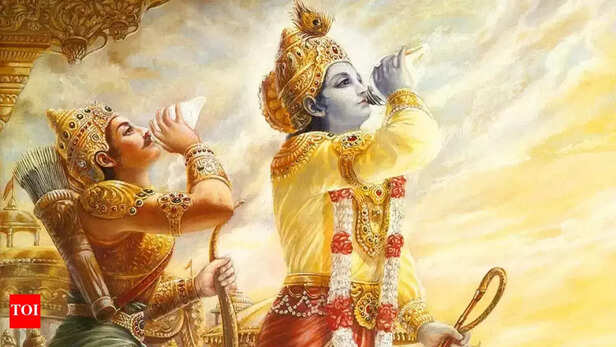
In the Bhagavad Gita, the great warrior Arjuna is paralyzed not by arrows or enemies, but by grief, guilt, and confusion. He lays down his bow, consumed by sorrow. Why?
"Ashochyān anvaśochas tvaṁ prajñā-vādāṁś ca bhāṣase"
(Gita 2.11)
“You grieve for that which is not worthy of grief, and yet you speak words of wisdom.”
Krishna reveals a deep truth here: most suffering is born from misidentification—with the body, with emotions, with roles. Arjuna's suffering is not from death, but from his refusal to let go of his idea of himself as a nephew, brother, and student. In doing so, he forgets his true nature as Atman, the eternal Self.
Suffering becomes hard to give up because it disguises itself as morality, loyalty, or even love.
The Gita teaches that suffering persists as long as there is attachment—to people, outcomes, and above all, to the ego.
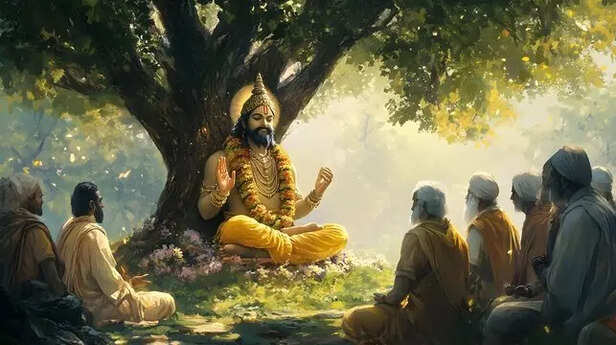
The Upanishads, the crown jewels of Hindu philosophy, go even deeper. They declare:
"Yo vai bhūma tat sukham; na alpe sukham asti."
(Chandogya Upanishad 7.23.1)
“Only the Infinite is bliss. There is no bliss in the finite.”
Here lies the heart of the matter: humans cling to suffering because they cling to the finite, to names, forms, status, and stories. They are unaware of their true nature—the infinite, formless Self. As long as one sees the world as separate from the Self, suffering is inevitable.
Avidya, or ignorance of one’s divine identity, is the root cause of all pain.
But why not let go of ignorance? Because the finite world, even in pain, is familiar. The Infinite seems abstract, and the mind prefers known discomfort over unknown freedom.
The Brihadaranyaka Upanishad states:
"Ātmanam viddhi" – “Know thyself.”
Only through atma-jnana does one break the cycle of suffering.
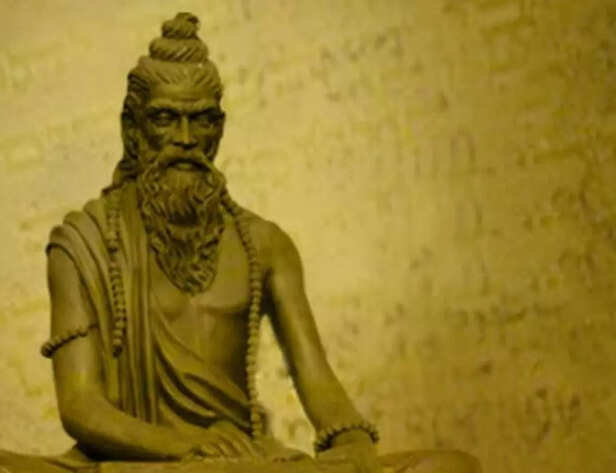
The Yoga Sutras of Patanjali describe a more psychological reason behind our suffering:
"Duḥkha-anusayi rāgaḥ"
(Yoga Sutra 2.7)
“Attachment follows pleasure, and clinging persists even to painful memories.”
Here, Patanjali presents a radical truth: the mind is addicted to patterns, even painful ones. Our suffering becomes part of our identity, encoded in neural and emotional impressions called samskaras. These create repetitive cycles of thought and behavior.
“Heyam duḥkham anāgatam” – “Future suffering can be avoided.”
(Yoga Sutra 2.16)
This sutra offers hope—but the path requires vigilant awareness and the courage to break inner habits. The deeper the pain, the more “real” it feels, and the harder it is to abandon. The yogi learns to observe pain without clinging to it.
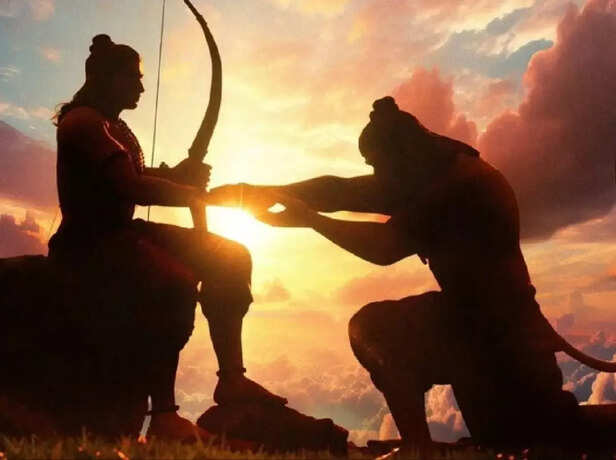
The Ramayana offers a cultural and ethical lens. After the rescue of Sita from Lanka, Rama—bowing to social expectations—abandons her again. Sita accepts her suffering, not with bitterness but with dignity.
This shows how, in Dharma-based societies, suffering can be internalized as a moral responsibility. One might endure injustice, pain, or loneliness, thinking it is their karma, or their duty. It becomes spiritually noble to suffer silently.
But this too becomes an identity—the martyr, the sacrificer. It becomes a robe one forgets how to take off.
The danger: suffering becomes a virtue instead of a lesson.
Even noble suffering must eventually be transcended. True Dharma does not glorify pain; it teaches discernment (viveka)—when to endure, and when to rise above.
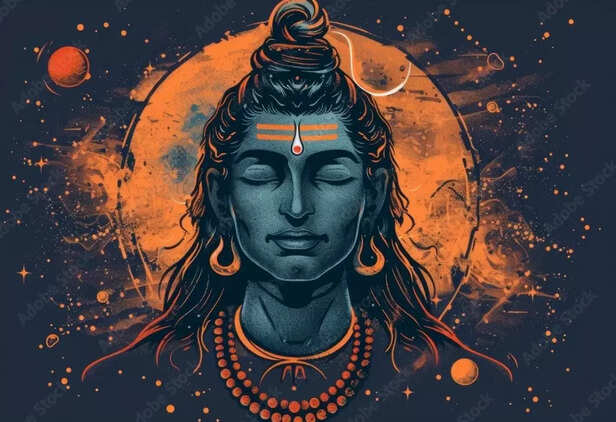
In Kashmir Shaivism, a powerful insight is revealed:
"Jñānaṁ bandhah"
(Shiva Sutras 1.2)
“Limited knowledge is bondage.”
What we know of ourselves—our past, our traumas, our roles—becomes a prison. The ego finds meaning in suffering. It says: This is who I am. And the deeper the suffering, the stronger the false self becomes.
Letting go of suffering would mean the collapse of the ego-self.
The Shiva Sutras urge the seeker to go inward, beyond thought and experience, into the awareness that witnesses even pain. There, the ego dissolves, and only Shiva-consciousness remains—free, radiant, eternal.
All Hindu philosophies—from Vedanta to Tantra—agree on one thing: suffering is not the enemy, but the first teacher. It leads to inquiry (vichara), dispassion (vairagya), and awakening (bodha).
But to be free, one must let go—not just of external pain, but of the inner addiction to suffering.
“Tyaktvā karma-phalāsaṅgaṁ nitya-tṛpto nirāśrayaḥ”
(Gita 4.20)
“By abandoning attachment to the results of actions, the wise one lives in freedom.”
When we relinquish the need to suffer, we reclaim our essence—peaceful, eternal, and whole.
In Hindu wisdom, the hardest renunciation is not of wealth, relationships, or even ego—but of pain. Why? Because pain is the final veil. It whispers, “You are this. This is your truth.” But the Rishis, Yogis, and Avatars declare otherwise:
You are not your pain. You are the witness of it. You are the Self beyond it.
Only when we let go of even the nobility of suffering, can we enter Sat-Chit-Ananda—Existence, Consciousness, Bliss.
– “For the wise, suffering is the first doorway to truth.”
Why do humans cling to suffering even when liberation, peace, and healing are within reach? Why does pain become so persistent, so deeply embedded in our personality that it almost feels sacred? The quote “A man will give up anything, except his suffering” is not just poetic—it's a philosophical mirror. And nowhere is this truth explored more profoundly than in the ancient scriptures of Hinduism.
This article explores the Hindu spiritual, psychological, and metaphysical insights into why suffering is so hard to let go—and how liberation (moksha) becomes possible only when we learn to give up even our pain.
Bhagavad Gita – When Identity Is Entangled in Pain

Image Credit: TOI
In the Bhagavad Gita, the great warrior Arjuna is paralyzed not by arrows or enemies, but by grief, guilt, and confusion. He lays down his bow, consumed by sorrow. Why?
"Ashochyān anvaśochas tvaṁ prajñā-vādāṁś ca bhāṣase"
(Gita 2.11)
“You grieve for that which is not worthy of grief, and yet you speak words of wisdom.”
Krishna reveals a deep truth here: most suffering is born from misidentification—with the body, with emotions, with roles. Arjuna's suffering is not from death, but from his refusal to let go of his idea of himself as a nephew, brother, and student. In doing so, he forgets his true nature as Atman, the eternal Self.
Suffering becomes hard to give up because it disguises itself as morality, loyalty, or even love.
The Gita teaches that suffering persists as long as there is attachment—to people, outcomes, and above all, to the ego.
The Upanishads – Suffering as a Product of Ignorance (Avidya)

Image Credit: Pixels
The Upanishads, the crown jewels of Hindu philosophy, go even deeper. They declare:
"Yo vai bhūma tat sukham; na alpe sukham asti."
(Chandogya Upanishad 7.23.1)
“Only the Infinite is bliss. There is no bliss in the finite.”
Here lies the heart of the matter: humans cling to suffering because they cling to the finite, to names, forms, status, and stories. They are unaware of their true nature—the infinite, formless Self. As long as one sees the world as separate from the Self, suffering is inevitable.
Avidya, or ignorance of one’s divine identity, is the root cause of all pain.
But why not let go of ignorance? Because the finite world, even in pain, is familiar. The Infinite seems abstract, and the mind prefers known discomfort over unknown freedom.
The Brihadaranyaka Upanishad states:
"Ātmanam viddhi" – “Know thyself.”
Only through atma-jnana does one break the cycle of suffering.
Patanjali’s Yoga Sutras – The Mind’s Addiction to Pain

Image Credit: Pixabay
The Yoga Sutras of Patanjali describe a more psychological reason behind our suffering:
"Duḥkha-anusayi rāgaḥ"
(Yoga Sutra 2.7)
“Attachment follows pleasure, and clinging persists even to painful memories.”
Here, Patanjali presents a radical truth: the mind is addicted to patterns, even painful ones. Our suffering becomes part of our identity, encoded in neural and emotional impressions called samskaras. These create repetitive cycles of thought and behavior.
“Heyam duḥkham anāgatam” – “Future suffering can be avoided.”
(Yoga Sutra 2.16)
This sutra offers hope—but the path requires vigilant awareness and the courage to break inner habits. The deeper the pain, the more “real” it feels, and the harder it is to abandon. The yogi learns to observe pain without clinging to it.
The Ramayana – When Pain Becomes a Duty

Image Credit: Freepik
The Ramayana offers a cultural and ethical lens. After the rescue of Sita from Lanka, Rama—bowing to social expectations—abandons her again. Sita accepts her suffering, not with bitterness but with dignity.
This shows how, in Dharma-based societies, suffering can be internalized as a moral responsibility. One might endure injustice, pain, or loneliness, thinking it is their karma, or their duty. It becomes spiritually noble to suffer silently.
But this too becomes an identity—the martyr, the sacrificer. It becomes a robe one forgets how to take off.
The danger: suffering becomes a virtue instead of a lesson.
Even noble suffering must eventually be transcended. True Dharma does not glorify pain; it teaches discernment (viveka)—when to endure, and when to rise above.
The Shiva Sutras – Suffering as Ego’s Mask

Image Credit: Pexels
In Kashmir Shaivism, a powerful insight is revealed:
"Jñānaṁ bandhah"
(Shiva Sutras 1.2)
“Limited knowledge is bondage.”
What we know of ourselves—our past, our traumas, our roles—becomes a prison. The ego finds meaning in suffering. It says: This is who I am. And the deeper the suffering, the stronger the false self becomes.
Letting go of suffering would mean the collapse of the ego-self.
The Shiva Sutras urge the seeker to go inward, beyond thought and experience, into the awareness that witnesses even pain. There, the ego dissolves, and only Shiva-consciousness remains—free, radiant, eternal.
Transcending Suffering—The Path Forward
But to be free, one must let go—not just of external pain, but of the inner addiction to suffering.
“Tyaktvā karma-phalāsaṅgaṁ nitya-tṛpto nirāśrayaḥ”
(Gita 4.20)
“By abandoning attachment to the results of actions, the wise one lives in freedom.”
When we relinquish the need to suffer, we reclaim our essence—peaceful, eternal, and whole.
Letting Go of Pain is the Final Sacrifice
You are not your pain. You are the witness of it. You are the Self beyond it.
Only when we let go of even the nobility of suffering, can we enter Sat-Chit-Ananda—Existence, Consciousness, Bliss.
